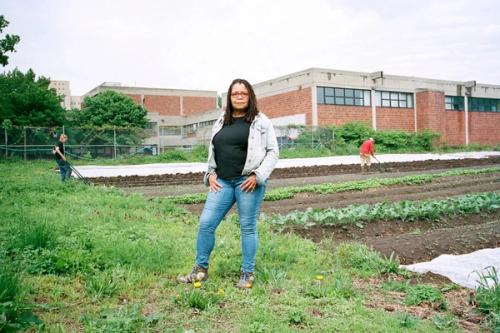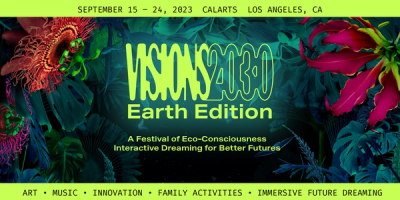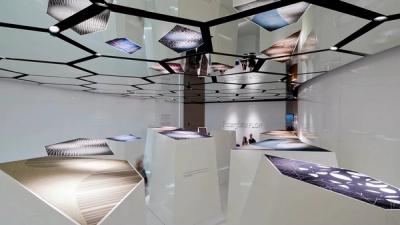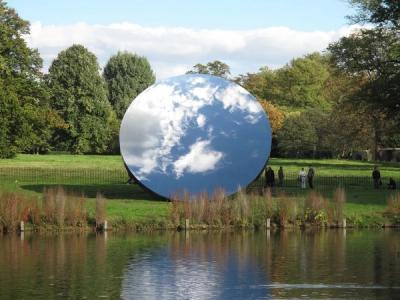
Walking down a Manhattan sidewalk in 2018, out of the blue, the name 2020Visions came to me. For many years, I’d wanted to start a foundation providing residencies for artists to create wild and crazy projects, pairing them with a scientist, engineer — a “practical problem-solver” — to bring these ideas to the next stage of development.
But there we were, in the post-Trump-election world, a swirling cauldron of reaction and anger, sides pitted against one another. I, too, was yelling at my TV set. (Maybe an angst manipulated by the media and politicians for their own purposes?) Coming from a time influenced by that 1960s-style belief “what you hold in your consciousness you attract,” it occurred to me it was a moment to create a gathering where we ask, “what do we want to move toward?” — rather than “against.”
I thought of artist Yoko Ono, who, with John Lennon, created — and still creates, works such as her Imagine Peace tower in Iceland — formulating dreams we dare to conceive. I also have long been inspired by artists who, particularly starting in the 1970s, produced work seeking to engage with social challenges in a direct way. The German artist Joseph Beuys, cofounder of the Green Party, developed what he called “social sculpture” — a notion that society itself is an artwork that all of us can shape.

Joseph Beuys’s lecture at SAIC in 1974. (Photo © 2012 Klaus Staeck and Gerhard Steidl)
With the remarkable Union Theology Seminary, we planned a September 10-12th inaugural conference in New York City — to launch artist collaborations and to devise methods of “Collective Dreaming” toward the future. Now that future is in flux — giving us opportunities to put creative, goal-oriented problem-solving into practice.
2020Visions is a living organism, a dynamic punctuated by cadenced moments. “Collective Dreaming” can help us envision where we want to move as a culture. We invite you to take a deep breath and dream farther, past emergency measures. And to ask: What do you want the future to look like?
Looking forward always,
Carey Lovelace, Founder, 2020Visions
Spotlight: Champions of the Artistic Imagination 2020Visions is devoted to harnessing the artistic imagination to forge new paradigms of society. Besides Joseph Beuys and Yoko Ono, there are others using their artistic practice to constructively deal with social issues.
Linda Goode Bryant

Linda Goode Bryant (by Sean Donnola for T Magazine)
“We saw the world go through a food crisis in 2008 and I kept wondering why we can’t grow our own food even if we’re surrounded by concrete. Did I know anything about growing food before I started Project EATS? Hell no. But I figured it out.”
Linda Goode Bryant has long been a champion of collaboration and innovation. As an artist, entrepreneur, former gallerist, and founder of the legendary Just Above Midtown gallery, Bryant is familiar with creative ways of building community and prioritizing sustenance. In 2009, she founded Project Eats — an urban agriculture initiative working to achieve visions of a fair society through sustainable farming in black and brown underserved communities, including a rooftop farm in the Lower East Side, and other sites in Manhattan, Queens, Brooklyn, and the Bronx.
Keep Reading – Growing Up: Linda Goode Bryant and Project Eats Bring a Garden to Frieze New York
Mary Ellen Carroll

PUBLIC UTILITY 2.0 is a work that extends through national borders into the non-visible real estate of radio frequencies.
“There are over 60 million people in the United States that are not connected to the Internet. This is a basic issue of need and access to connectivity. My work as an artist, considers this spatially, to transform the spectrum for the 21st century, both architecturally and programmatically to create equitable access for all. ” – Mary Ellen Carroll.
New York City-based conceptual artist Mary Ellen Carroll creates work at the nexus of architecture, public policy, performance, and film — much of it addressing the world we live in. The collaborative Public Utility 2.0 (2012 — present) positions “Super WiFi” devices beneath New Orlean’s elevated I-10 expressway to provide broadband wireless to an underserved African American community. (A 2011 Rice University innovation, “Super WiFi” deploys cognitive radios using unused frequencies that previously broadcasted UHF/VHF television channels.)
Keep Reading – Why Art, Not Google, Could Revolutionize WiFi
Beyond Coronavirus
Crisis reshuffles the deck called society. Can we conceive solution-structures to deal with the upheaval brought by the virus? And what would we like the world to be, once we emerge? Beyond living in a crisis, we need to live in the solution.
Visionary futurist Buckminster Fuller spoke of transforming ‘Weaponry’ (production geared for military-industrial complex) into ‘Livingry.’ What is the ‘Livingry’ that might emerge from this crisis and how could its deployment employ talent/labor now lying fallow?
What we are involved in may bring a huge economic shock and challenges for many. But we need to look across the valley and see the other side. What will be different, and what will “return to normal,” in, say, 2022? A rough ride, perhaps — but we human beings are endlessly creative and resourceful.
Already we are establishing new modes of communicating and connecting. Are we broadening what is possible for us as a community — or what we think of as “community?”
The future may already be here…
2020Visions is focused on exploring the New Body, the New City, the New Ethics, the New Consciousness, the New World. We contemplate not dystopia, but, for example, but the good things that AI might bring, the possibility of ecologically sensitive engineered cities, of a world without disease, vibrant new forms of communication.
What are some futures you’d like us to explore? (And what are your “desired” futures?)


























